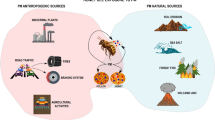Abstract
The study showed how trails were established with and without any food source. The two stimulants for strong trail-laying by the termites were found to be: (1) a virgin (trail-less) surface, and (2) a discovered food source. Whenever a food source was discovered, the returning workers (from the food source to the nest) increased strong trail-laying (STL) activity more than the outgoing termites.
The results also confirmed that there was no trail specificity (neither in artificial trail extracts nor in natural trails) between different colonies of Amitermes evuncifer. This means that in trail bioassays, test termites can be taken from any colony (of the same species). A method devised for extracting, preserving as well as carrying out tests with extracted natural trail was discussed.
Trail activity was measured in terms of “trail unit” (TU). The trail activity of a single worker sternal gland was found to be 15,000 TU. This is the highest activity ever found in a worker of any termite species. This study has confirmed chemical communication in Amitermes evuncifer.
Résumé
Cette étude montre l’établissement des traces de pheromone sont grace a l’existence d’une source d’alimentation, sort independamment de celle-ci. Les deux stimulants qui ont affaire au depot de fortes traces par les termites s’averent etre (1) une surface vièrge (c’est-a-dire saus traces) et (2) une source d’alimentation decouverte.
Une source d’alimentation decouverte donne toujours aux ouvriers quien reviennent au nid une plus grande impulsoiri quant au depot de traces qu’elle ne le fait pour les termites qui sortent du nid.
Les resultats confirment aussi la vue selon laguelle il n’existe aucun tract distincty (quant aux extracts de traces artificelles ou naturelles) extre les differentes colonies de l’Amitermes evuncifer. Cela implique que le chercheur (en biologie) peul se seruri de termites (de la meme espece) independamment de leur colonie d’origine.
On discute daus cette etude equalement une methode d’extracre des traces de pheromone de les conserver aussi bren que de faire des assais a l’aide l’extrants de traces naturelles. Les activites se rapportant au depot de traces par les termites sort evaluees en termes d’unite de trace (UT). On a pu constater que l’activite de la glande sternale d’un ouvrier est de 15,000 unte’s de trace. Ce chiffre pour un seul ouvrier est le plus eleve qu’on ait jamain veleve pour toutes les especes de termites.
L’étude confirme aussi la communication chimique chez les Amitermes evuncifer.
Similar content being viewed by others
References
Blum M. S. (1971) Dimensions of chemical society. Proc, 2nd Int. IUPAC Congress (Edited by Tahori A. S.) Tel Aviv, Israel. In Chemical Releasers in Insects 3, 141–162.
Howard R., Matsunura F. and Coppel H. C. (1976) Trail following pheromones of the Rhinotermitidae: Approaches to their authentication and specificity. J. Chem. Ecol. 2, 147–166.
Karlson P., Lüscher M. and Hummel H. (1968) Extraction und biologische Answertung des spurpheromons der Termite Zootermopsis nevadensis. J. Insect Physiol. 14, 1761–1763.
Karlson P. and Lüscher M. (1959) “Pheromone” A new term for a class of biologically active substances. Nature. 183, 1835.
Karlson P. and Butenandt A. (1959) Pheromones (Ectohormones) in insects. A. Rev. Ent. 14, 39–58.
Leuthold R. H. (1973) Orientation of Harvester termite, Hodo termes mossambicus Hagen. Proc. 7th Congr. IUSSI. London pp. 244–246.
Leuthold, R. H. and Lüscher, M. (1974) An unusual caste polymorphism of the sternal gland and its trail pheromone production in the termites, Trinervitermes bettonianus. Insects Sociaux 21, 335–341.
Leuthold R. H. (1975) Orientation mediated by pheromones in Social Insects. In Pheromones and Defensive Secretions in Social Insects. (Edited by Ch. Noirot, Howse P. E. and Le Masne G.), pp. 197–211. Proc. of Symp. by IUSSI.
Leuthold R. H., Bruinsma O. and Van Huis (1976) Optical and pheromonal orientation and memory of homing distance in the harvester termite Hodotermes mossanbicus Hagen. Behav. Econ. Sociobiol. 1, 127–139.
Malaka S. L. O. and Leuthold R. H. (1986) Mechanisms of recruitment for the retrieval of food in Amitermes evuncifer Silvestri (Isoptera, Termitidae, Termitinae). Insect Sci. Applic. (In press).
Matsumura F., Jewett D. M. and Coppel H. C. (1972) Interspecific responses of termites to synthetic trail following substance. J. Econ. Ent. 65, 600–602.
Oloo G. W. and Leuthold R. H. (1979) The influence of food on trail laying and recruitment behaviour in Trinervitermes bettonianus (Termitidae, Nasutitermitinae). Ent. exp. et appl. 26, 267–278.
Oloo G. W. (1981) Specificity of Termite Trails, Analysis of Natural Trail of Trinervitermes, Macrotermes and Odontotermes from Sympatric Populations. Ent, exp. et appl 29, 162–168.
Tschinkel W. R. and Close P. G. (1975) The trail pheromone of the termite, Trinervitermes trinervoides. J. Insect Physiol. 19, 707–721.
Author information
Authors and Affiliations
Rights and permissions
About this article
Cite this article
Omo Malaka, S.L. Establishment of Foraging Trail and Qualification of Trail Pheromone by Amitermes Evuncifer Silvestri (Isoptera; Termitidae; Termitinae). Int J Trop Insect Sci 8, 343–350 (1987). https://doi.org/10.1017/S174275840000535X
Received:
Revised:
Published:
Issue Date:
DOI: https://doi.org/10.1017/S174275840000535X




